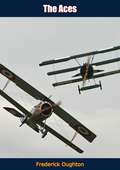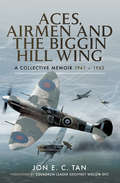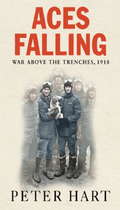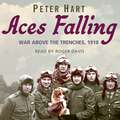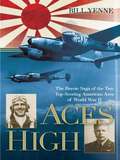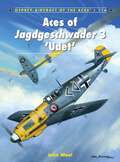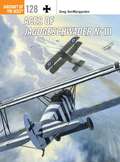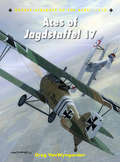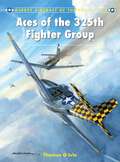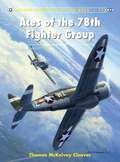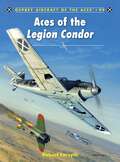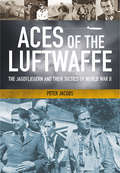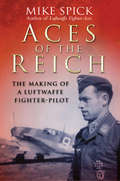- Table View
- List View
Acelero Learning
by Amy Klopfenstein Katherine Chen Kathleen L. McGinn Mario SmallIn November 2020, Henry Wilde, co-founder and CEO of Acelero, Inc., must decide whether to change his company's program model for delivering early childhood education to low-income children. One of the only for-profit Head Start providers in the United States, Acelero provided direct services through neighborhood childcare centers and operated a consulting arm to improve the services of other Head Start centers. The company had developed a reputation for excellence and was profitable, pleasing its investors. However, Senior Vice President of Family Engagement Lori Levine urged Wilde to change the company's process for interacting with parents. While Levine's preferred model had the potential to drive deeper social impact, it was not yet a proven success and did not have the potential to make Acelero's business more profitable. Further, if the new model failed, Wilde risked losing the credibility that he and his team had build in the early childhood education field over the company's 19-year history. Wilde and Levine had piloted the model at a single Acelero center, and the early results were promising. At the conclusion of the case, the CEO must decide whether to scale the program model to other centers, or whether to stay the course with his company's existing operations.
ACEP First Aid Manual 5th Edition: The Step-by-Step Guide for Everyone
by DKA possible life-saving reference to keep around the house or in the car, DK's First Aid Manual looks at more than 100 different conditions, from splinters and sprained ankles to strokes and unconsciousness, and shows exactly what to do with step-by-step photographic sequences. Every condition is clearly explained, outlining causes, symptoms, and signs, and action plans. The updated design makes the instructions easier to follow, whether you need information on emergency first aid, first aid for babies and children, or tips on resuscitation. This ACEP First Aid Manual is an invaluable resource to keep you and your loved ones safe and healthy.
Acer America: Development of the Aspire
by Christopher A. Bartlett Anthony St. GeorgeFollows the development, national launch, and global rollout of the Aspire, Acer's first new product developed outside of Taiwan. Implementing a very promising new PC concept proves challenging to Mike Culver and his U.S. team, who are plagued by coordination problems with experts and resource managers in Taiwan. Leading the global rollout proves equally difficult, with local managers wanting to make local adaptations. After 2.5 years of missed forecasts and unexpected losses, CEO Stan Shih must decide whether to abandon the Aspire. More profoundly, what changes does this failure suggest for his radical "fast food" business concept and his "client server" organization model?
Acer, Inc.: Taiwan's Rampaging Dragon
by Christopher A. Bartlett Anthony St. GeorgeDescribes the strategic, organizational, and management changes that led Acer from its 1976 startup to become the world's second-largest computer manufacturer. Outlines the birth of the company, the painful "professionalization" of its management, the plunge into losses, and the transformation under founder Stan Shih's radical "fast food" business concept and his "client server" organization model, which are put to the test when a young product manager in Acer America develops a radically new multimedia home PC with global potential. Shih must decide whether to give an inexperienced manager in a loss-generating subsidiary the green light.
The Aces
by Frederick OughtonTHE FIRST WORLD WAR IN THE AIR…MANNOCK, McCUDDEN, VON RICHTHOFEN, UDET…TRUE STORIES OF THE GREATEST ACESAt the beginning of World War I the military potential of the airplane was completely unknown….THE ACES tells the stories of the hardy men who converted the skies over France and Germany into a modern jousting field.“The general aim of this book is twofold: to uncover the personalities of the men called ‘aces’, and to show the reader the actual birth of courage and tenacity in wartime airpower, a heritage now shared equally by the air forces of the world.”—Frederick Oughton, Introduction
Aces Abroad (Wild Cards IV)
by George R. R. MartinA group of politically conscious Wild Cards sets out on a daring mission to the four corners of the Earth to uncover the fate of Wild Cards in other lands.
Aces, Airmen and The Biggin Hill Wing: A Collective Memoir, 1941–1942
by Jon E. Tan Geoffrey WelliumDuring the Second World War, RAF Biggin Hill was one of Fighter Commands premier stations. Throughout the Battle of Britain and beyond, it became a hotbed of talent and expertise, home to many of the Commands most notable and successful squadrons. Both on the ground and in the air, Biggin Hill had a formidable reputation and its prowess was very much built on a partnership between air and ground personnel, including squadron members, specialist engineers, armorers and other ground-crew. This fascinating new book from Jon Tan offers a rich account of the years 1941-1942, an incredibly varied and eventful period in Biggins story.The authors late grandfather, David Raymond Davies, was assigned to a specialist armorers team at Biggin Hill and his grandsons narrative serves as a tribute to a particularly fascinating RAF career. Told from Davies firsthand viewpoint and taking a ground-crew members perspective, no other history has been published that examines day-to-day operations at Biggin Hill in this way.Drawing on many sources, including original interviews with veterans, the narrative foregrounds Davies story, using it as the backbone for Tans broader historical record of the operations of Biggins Spitfire squadrons. It thus establishes a collective memoir, taking in accounts by such notable pilots as Don Kingaby, Jamie Rankin, Brian Kingcome, Walter Johnnie Johnston, Dickie Milne and Raymond Duke-Woolley, all of whom had close associations with Davies in his capacity as a specialist armourer. Reading the manuscript, Squadron Leader Johnnie Johnston told the author I read it often; it sits here on the table next to me. Its the closest to how I remember it.Far from being a dry account of daily operations, this narrative seeks to engage the reader emotionally. Bringing together a considerable amount of evidence and oral history, it tells the story of one twenty-one year old and his comrades, thrown into the howling gale of the Second World War and the intensity of the conflict as experienced by front-line RAF personnel.
Ace's Basement (Orca Currents)
by Ted StauntonFollowing the demise of his first band, Ace has started a duo called Two with Lisa, a girl he has a huge crush on. As Ace and Lisa get serious about their music, Denny, Ace's hapless friend, tries to help out by filming their every move so that he can create the ultimate music video. As a joke, Denny puts together a Two video capturing all of the embarrassing moments—moments that Lisa in particular doesn't want shared. Somehow, the video gets posted on YouTube. Lisa and Ace find themselves starring in the latest comedic viral video. Lisa is humiliated and refuses to talk to Ace—until their fame turns out to have positive results. This short novel is a high-interest, low-reading level book for middle-grade readers who are building reading skills, want a quick read or say they don’t like to read! The epub edition of this title is fully accessible.
Aces Falling: War Above The Trenches, 1918
by Peter HartHow the age of the great WWI aces came to an end in the skies over the Western FrontAt the beginning of 1918 the great aces seemed invincible. Flying above the battlefields of the Western Front, they cut a deadly swathe through the ranks of their enemies, as each side struggled to keep control of the air. Some were little more than boys when they started to fly, yet they were respected and feared as some of the deadliest killers in the sky. But as the press of fighting increased with the great offensives of 1918, nervous stress and physical exhaustion finally began to take their toll - and one by one the aces began to fall.This book charts the rise and fall of the WWI aces in the context of the vast battles that were taking place in 1918. It shows the vital importance of reconnaissance, and how large formations of aircraft became the norm - bringing an end to the era of the old, heroic 'lone wolves'. As the First World War came to a close very few of the aces survived. This epic history of the final year of the air war is both a chronicle of the ways in which 1918 changed aerial combat forever, and a requiem for the pioneers of aerial combat who eventually became the victims of their own brilliant innovations.
Aces Falling: War Above The Trenches, 1918
by Peter HartHow the age of the great WWI aces came to an end in the skies over the Western FrontAt the beginning of 1918 the great aces seemed invincible. Flying above the battlefields of the Western Front, they cut a deadly swathe through the ranks of their enemies, as each side struggled to keep control of the air. Some were little more than boys when they started to fly, yet they were respected and feared as some of the deadliest killers in the sky. But as the press of fighting increased with the great offensives of 1918, nervous stress and physical exhaustion finally began to take their toll - and one by one the aces began to fall.This book charts the rise and fall of the WWI aces in the context of the vast battles that were taking place in 1918. It shows the vital importance of reconnaissance, and how large formations of aircraft became the norm - bringing an end to the era of the old, heroic 'lone wolves'. As the First World War came to a close very few of the aces survived. This epic history of the final year of the air war is both a chronicle of the ways in which 1918 changed aerial combat forever, and a requiem for the pioneers of aerial combat who eventually became the victims of their own brilliant innovations.
Aces Falling: War Above The Trenches, 1918
by Peter HartHow the age of the great WWI aces came to an end in the skies over the Western FrontAt the beginning of 1918 the great aces seemed invincible. Flying above the battlefields of the Western Front, they cut a deadly swathe through the ranks of their enemies, as each side struggled to keep control of the air. Some were little more than boys when they started to fly, yet they were respected and feared as some of the deadliest killers in the sky. But as the press of fighting increased with the great offensives of 1918, nervous stress and physical exhaustion finally began to take their toll - and one by one the aces began to fall.This book charts the rise and fall of the WWI aces in the context of the vast battles that were taking place in 1918. It shows the vital importance of reconnaissance, and how large formations of aircraft became the norm - bringing an end to the era of the old, heroic 'lone wolves'. As the First World War came to a close very few of the aces survived. This epic history of the final year of the air war is both a chronicle of the ways in which 1918 changed aerial combat forever, and a requiem for the pioneers of aerial combat who eventually became the victims of their own brilliant innovations.
Aces High
by Kay HooperNew York Times bestselling author Kay Hooper weaves a tale of betrayal and second chances as two lovers torn apart by deception team up for one last mission. Recruited as a spy out of college, Katrina Keller learned to use every asset at her disposal to ferret out sensitive information for the Americans. But after her cover was partially blown, the love of her life--another federal agent--left under the impression that she had betrayed their country. In response, Katrina buried her pain and sought refuge in a low-key operation run out of an amusement park. Then, just as Katrina thinks she's really moved on, Skye Prescott crosses her path once again. Skye never recovered from Katrina's betrayal. Hiding in the shadows, he turned himself into a reckless, ruthless force of nature. But when his supposedly piece-of-cake mission thrusts Katrina back into his life, he quickly realizes he made a terrible mistake by leaving her without digging for the truth first. Skye's nature demands swift action. Nothing gets in his way when he decides what he wants. And now not even Katrina's protests will stop him from winning her back. Includes a special message from the editor, as well as an excerpt from another Loveswept title.
Aces High (Hagen #11)
by Kay HooperSkye Prescott was tall, dark and dangerous, a man who'd never forgotten how Katrina Keller had betrayed him years before...and never stopped hating himself for wanting her still. In a world where survival depended on suspicion, he'd fallen in love-and it had broken him as violence never had.
Aces High
by Bill YenneThey were two of the greatest heroes of World War II. But only one could be top gun... Capturing the hearts of a beleaguered nation, the fighter pilots of World War II engaged in a kind of battle that became the stuff of legend-and those who survived showdowns earned the right to be called aces. But two men in particular rose to become something more. Richard "Dick" Bong was a bashful, pink-faced farm boy from the Midwest. Thomas "Tommy" McGuire was a wise-cracking, fast-talking kid from New Jersey. What they shared was an unparalleled gallantry under fire which earned them each the Medal of Honor. What they had between them was a closely watched rivalry to see who would emerge as the top-scoring American ace of the war. What they left behind is a legacy and a record of aerial victories that has yet to be surpassed anywhere in the world.
Aces High, Volume 1: A Tribute to the Most Notable Fighter Pilots of the British and Commonwealth Forces of WWII
by Christopher Shores Clive WilliamsFirst in the Aces High series—a military reference of the fighter pilots who had five or more confirmed victories while serving in the Royal Air Force. Introduced by the French quite early in World War I, the term &“ace&” was used to describe a pilot credited with five or more aerial victories. But in the United Kingdom, the term was never officially recognized. Becoming an ace was partly luck, especially considering the campaigns in which they flew and the areas of combat. There are three distinct kinds of aces: the defensive ace, the offensive ace, and the night fighter. This book is a revised collection of the biographies of the highest scoring Allied fighter pilots of World War II—including those with the confirmed claims of shooting down five aircraft and those pilots with lower scores but whose wartime careers prove them worthy of inclusion. All details of their combat are arranged in tabular form. Included are a selection of photographs from hitherto private collections. &“There are some authors whose name alone is sufficient reason to but a book, and Christopher Shores is surely one of these . . . By profession a chartered surveyor, he served in the Royal Air Force in the 1950s so his writing bears the stamp of authenticity.&” —HistoryNet
Aces High, Volume 2: A Further Tribute to the Most Notable Fighter Pilots of the British and Commonwealth Air Forces in WWII
by Christopher ShoresSecond in the Aces High series—an updated military reference of the fighter pilots who had five or more confirmed victories while serving in the RAF. This volume updates the information in the first volume and adds some new names. Information has been added on the pilots who gained success against the V-1 flying bombs during 1944-45. Detail is also provided on those units in which virtually all the fighter pilots served at some time or another—the fighter Operational Training Units—and of specialist units such as the Central Gunnery School, Fighter Leader&’s School and Fighter Experimental Units. There is also coverage of the only other conflicts in which British pilots have been able to claim victories since 1945—Korea and the Falklands Conflict. &“There are some authors whose name alone is sufficient reason to but a book, and Christopher Shores is surely one of these . . . By profession a chartered surveyor, he served in the Royal Air Force in the 1950s so his writing bears the stamp of authenticity.&” —HistoryNet
Aces High (Wild Cards II)
by George R. R. MartinThe Jokers and Aces must battle to save the Earth from the Swarm, a deadly menace from the far reaches of space.
Aces of Jagdgeschwader 3 'Udet'
by John WealIn Me-109s and FW-190s from the Battle of Britain to Stalingrad, Kursk, Normandy, the Battle of the Bulge, and Berlin, German aces from Jagdgeschwader 3 racked up a stunning aerial record.Jagdgeschwader 3 may not have the same immediate resonance as some of the more famous Luftwaffe fighter units, such Jagdgeschwader 2 'Richthofen', but it is arguably the archetypal German fighter formation of World War 2. Not only did it participate in every campaign fought by the Luftwaffe (with the exceptions of Poland and Norway), it flew every major variant of the two legendary German wartime fighters, the Messerschmitt Bf 109 and the Focke-Wulf Fw 190 - starting with the Bf 109E in 1939 and ending with the Fw 190D-9 'Long-nose' in 1945. And, during the course of the hostilities, it numbered among its ranks more than 70 Knight's Cross winners (a total exceeded by only one other Jagdgeschwader). The wealth and variety of detail afforded by such a background - which includes the historic battles of Britain, Stalingrad, Kursk, Normandy, the Ardennes and Berlin - provides an ideal framework upon which to portray the multitude of stories, exploits and ultimate fates of the many aces themselves, from the now unknown trio who achieved their first five kills during the Blitzkrieg in France in the late spring/early summer of 1940 to the nearly two-dozen highly acclaimed and lauded 'centurions' who flew with JG 3.
Aces of Jagdgeschwader Nr III
by Harry Dempsey Greg VanwyngardenRoyal Prussian Jagdgeschwader Nr III was the third of Germany's vaunted fighter wings to be formed during World War 1. Commanded by the Pour le Mérite winner and well-respected ace Hauptmann Bruno Loerzer for its entire existence, it was composed of the celebrated Jasta 'Boelcke', along with Jagdstaffeln 26, 27 and 36. Equipped largely with the new Fokker triplane, these four units would play an important role in the Kaiserschlacht as part of the 17. Armee. As Germany's fortunes waned in the summer of 1918, the aces of JG III nonetheless did their best to stem the tides of British, French and later American aircraft they encountered. Aces such as Carl Bolle, Paul Bäumer, Heinrich Bongartz, Hermann Frommherz, Rudolf Klimke and the infamous Hermann Göring all carved their names in the record books flying in this formidable formation. This book examines the tactics, achievements and personalities of one of the deadliest of Germany's aerial units.
Aces of Jagdstaffel 17
by Harry Dempsey Greg VanwyngardenThis German World War I fighter squadron led by a Blue Max recipient didn't include the Richtofen (the Red Baron), but it's range of colorful characters was nonetheless impressive.Initially formed to assist in the defence of the city of Metz against French bombing raids, Royal Prussian Jagdstaffel 17 would go on to become one of the most distinguished German fighter units of World War 1. Its first victory was scored by the pilot whose story is inextricably interwoven with that of his unit - the 'Blue Max' recipient Julius Buckler. Buckler would rise from a humble NCO to commander of the Staffel, and overcome numerous wounds to score 35 of the squadron's total of 101 confirmed victories. He was largely responsible for inspiring the unit's unique Esprit de Corps, expressed in its famous and unique 'battle-cry' of 'Malaula!' Indeed, in its final days the unit gained the nickname Zirkus Buckler, or the 'Buckler Circus'. Besides Buckler, Jasta 17 boasted such aces as Karl Strasser, Alfred Fleischer and Christian Donhauser. In addition, the roster included colourful characters like the successful Jewish airman Jakob Wolff, who at over 48 years of age was the oldest German fighter pilot of the war. The story of this illustrious unit is told with many first-hand accounts by Buckler, Fleischer and others, as well as dozens of rare archival photos of the unit's beautifully decorated fighter aircraft.
Aces of the 325th Fighter Group
by Chris Davey Tom IvieAmerican pilots flew P-40 Warhawk, P-47 Thunderbolt, and P-51 Mustang fighters over Noth Africa, Sicily, and Italy in the World War II Mediterranean Theater of Operations as part of the 325th Fighter Group. The 325th FG was activated under General Order number 50 on 30 July 1942 and set up training operations at Theodore F Greene Field in Providence, Rhode Island. By mid-December 1942 the group was considered ready for combat and the alert for overseas duty arrived on 2 January 1943. The pilots and their P-40s departed on the carrier USS Ranger on 8 January and flew their aircraft off the vessel into Cazes airfield, near Casablanca, on 19 January 1943. After the remainder of the personnel arrived in late February, the group prepared for combat, and finally flew its first mission on 17 April 1943 as part of the Twelfth Air Force. During the next four months it participated in the North African campaign, and operations against enemy-held islands in the Mediterranean Sea. By the end of the Sicilian campaign on 17 August the 325th FG had scored 128 aerial victories, been the first P-40 unit to deliver 1000-lb bombs against enemy targets, and had escorted 1100 bombers without losing a single one of them to enemy action. In September 1943 the 325th began its conversion to the P-47 Thunderbolt and in late December headed for its new base in Italy. During the next six months the 325th flew escort missions over Italy and the Balkan countries as part of the Fifteenth Air Force. During its P-47 period the 325th's pilots claimed 153 aerial victories and established itself as a very aggressive escort group. In May 1944 the 325th began converting to the P-51 Mustang, which it flew with great success for the remainder of the war. Thirteen of its 27 aces achieved this status while flying the Mustang. By VE Day the 325th FG had destroyed 537 enemy aircraft in aerial combat and 281 on the ground, as well as numerous ground targets such as locomotives, trucks etc. The group was awarded two Distinguished Unit Citations and its pilots earned numerous medals, including four Distinguished Service Crosses, for individual bravery in combat. The cost was high, however, as 148 pilots were lost in action - being killed or becoming PoWs.
Aces of the 78th Fighter Group
by Thomas Cleaver Chris DaveyEighth Air Force 78th FG flew P-38 Lightning, P-47 Thunderbolt, and P-51 Mustang fighters in air combat against German Luftwaffe Me-109, Fw-190, and Me-262 aircraft. The 78th FG was originally established as the fourth of the P-38 fighter groups that were expected to perform fighter escort in the newly formed Eighth Air Force. Arriving in England in November 1942, the group lost most of its personnel and all of its aircraft as attrition replacements to units in the North African theatre in February 1943. Left with no flying personnel other than flight leaders, and no aircraft, the group was re-equipped with the P-47 Thunderbolt and newly trained P-47 pilots in March 1943. The 78th flew its first sweep along the Dutch coast in April in company with the 4th FG. Along with the 56th FG, these groups would be the first units in VIII Fighter Command, and as such "wrote the book" on long range fighter escort in the ETO. The 78th FG would ultimately prove to be the only Eighth Air Force fighter group to have flown the P-38 Lightning, P-47 Thunderbolt, and P-51 Mustang in its operational career. Flying from Duxford, in Cambridgeshire, the group's pilots shot down 316 enemy aircraft in air combat, with a further 144 claimed as probables or damaged. Once turned loose in 1944 to attack German airfields, the 78th was also credited with the destruction of 320 aircraft by strafing. The story of the 78th FG will be researched through extensive first-person interviews with eight surviving pilots and ground personnel of the unit, and also using previously recorded interviews with two leading ace pilots who are no longer alive. Photos will be gathered from surviving group members where possible, with emphasis on never-before-published imagery, in addition to other photos from historical collections.
Aces of the Legion Condor
by Jim Laurier Robert ForsythBy the outbreak of World War 2, the Luftwaffe had acquired effective tactical battlefield experience from its involvement in the Spanish Civil War in 1936-1939, centered around the operations conducted by the Legion Condor, a force of some 19,000 'volunteer' German airmen, staff, technicians and groundcrew formed into fighter, bomber, reconnaissance, Flak, weather and signals elements.In this new book, author Robert Forsyth, renowned expert on World War 2 German aviation, details the development of both the technologies and the pilots of this German air force, with full-color illustrations, plates and details of color schemes used within the Legion Condor. From the He 51 to the Messerschmitt, from flying in close wing-to-wing formations to the looser, wider formations common to the Luftwaffe during World War 2, this book is a must-have for any German aviation historian or modeler.From the Trade Paperback edition.
Aces of the Luftwaffe: The Jagdflieger in the Second World War
by Peter JacobsA history of Nazi Germany&’s air force along with details of some of its most successful pilots. World War II&’s air battles were fought ferociously and with extraordinary skill and courage on both fronts. The fighter pilots of Luftwaffe, the jagdflieger, in fact outscored their Allied counterparts by some margin and were some of the highest scoring fighter pilots of all time. More than a hundred recorded a century of aerial successes with two going on to surpass an astonishing 300 victories. In the end, the vast effort required by the Luftwaffe to maintain the air war on so many fronts proved too much. Few jagdflieger survived the last days of the Reich. But their ability was beyond question, and the names of some will live on in the annals of air warfare with their extraordinary achievements never to be surpassed. In Aces of the Luftwaffe, Peter Jacobs examines the many campaigns fought by the Luftwaffe, from its fledgling days during the Spanish Civil War to its last days defending the Reich, and recounts the exploits of Erich Hartmann, the highest scoring fighter pilot of all time; Hans-Joachim Marseille, the Star of Africa; Werner Mölders, the first recipient of the Diamonds; and Adolf Galland, perhaps the most famous of all.
Aces of the Reich: The Making of a Luftwaffe Pilot
by Mike Spick&“Fascinating . . . you&’ll gain tremendous insight into some of the best fighter pilots the world has ever known, as well as the Luftwaffe&’s rise and fall.&” —The Military Book Club In 1939, the Luftwaffe was arguably the world&’s best-equipped and best-trained air force. Its fighters were second to none, and their pilots had a tactical system superior to any other in the world. In campaigns over Poland, Norway, the Low Countries and France, they carried all before them. Only in the summer of 1940 did they fail by a narrow margin in achieving air superiority over England. In the West, with a mere holding force, they maintained an enviable kill-loss ratio against the RAF, while elsewhere they swept through the Balkans, then decimated the numerically formidable Soviet Air Force. Their top scorers set marks in air combat that have never been surpassed. Yet within three years—despite the introduction of the jet Me 262, the world&’s most advanced fighter—the Luftwaffe fighter arm had been totally defeated. How did this happen? Air-warfare historian Mike Spick explores this question in depth in this incisive and compelling study of World War II&’s most fearsome air force.&“Spick&’s work explores one of the interesting questions of World War II: why did the Jagdwaffe, the most efficient, best-trained and most technically advanced air force in the world in 1939 endure a bewildering defeat within three short years. Spick comes up with some interesting theories to do with the influence of the cult of Manfred Von Richtofen (the Red Baron).&” —In Flight USA


